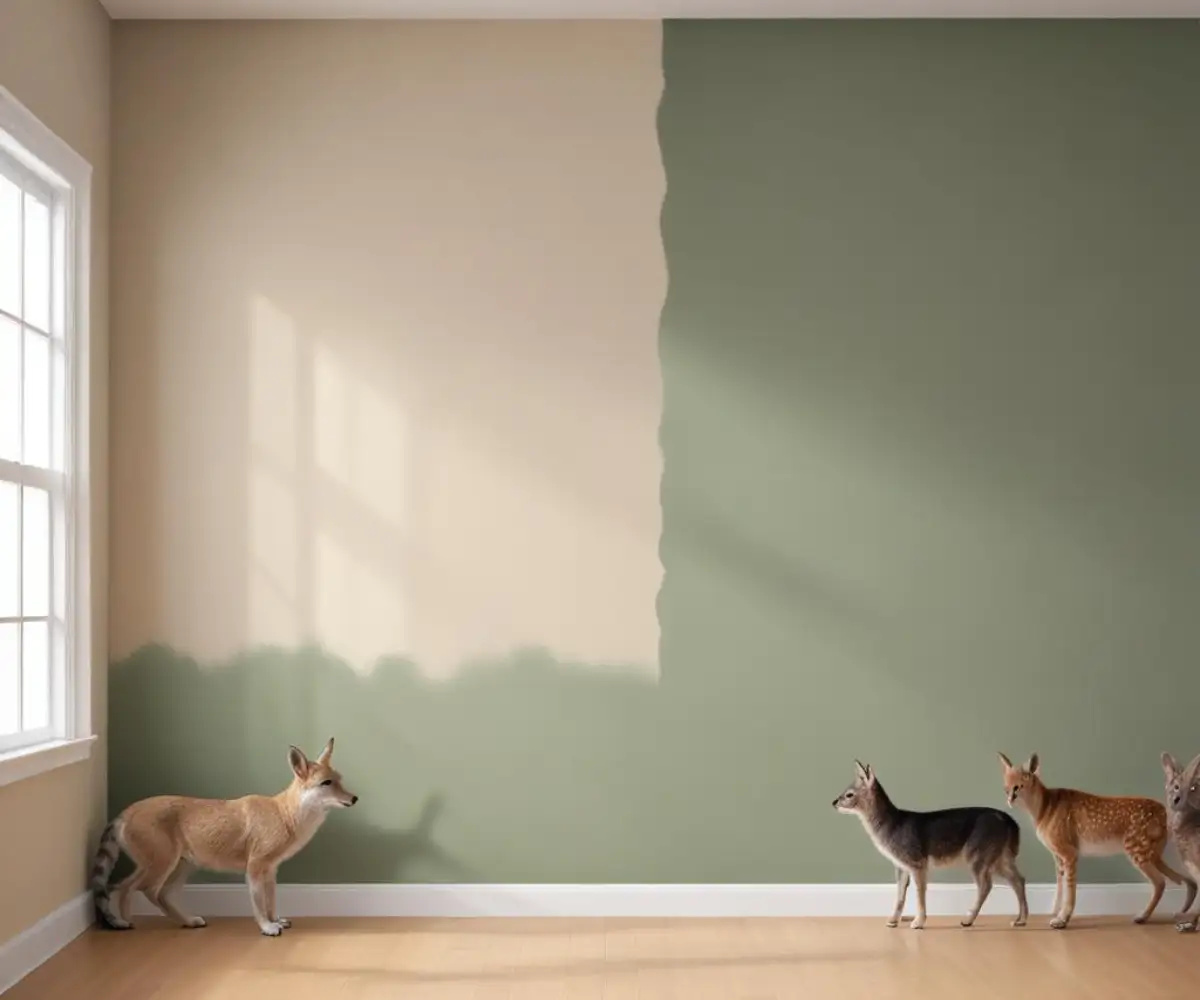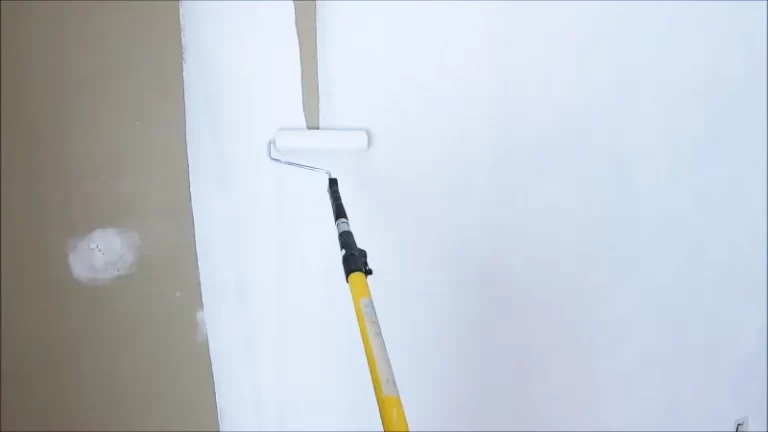Dunn-Edwards vs Benjamin Moore: The Brutal Truth on Which Paint Is Worth Your Money
Choosing the right paint is one of the most stressful decisions a homeowner can make. Standing in front of a wall of color chips, you’re not just picking a hue; you’re making a long-term investment in your home’s appearance and durability. The wrong choice means wasted weekends, surprise costs, and the nagging feeling of a job that isn’t quite right.
Two names consistently rise to the top of the premium paint market: Dunn-Edwards and Benjamin Moore. Both are trusted by professionals and discerning homeowners, but they aren’t interchangeable. Making a decision without understanding their core differences can lead to a finish that fails to withstand your climate, fades prematurely, or simply doesn’t justify its premium price tag.
This decision is about more than just color. It’s about formulation, regional specialization, durability, and overall value. This guide cuts through the marketing noise to deliver a head-to-head comparison, helping you avoid painter’s remorse and choose the brand that truly meets the demands of your project and your environment.
You'll Learn About
Brand Heritage and Philosophy: More Than Just Color
Understanding where these two giants come from reveals a lot about their products. Their histories have shaped their strengths, creating distinct advantages depending on your needs.
Founded in 1883, Benjamin Moore has built a national reputation for quality and innovation. It is synonymous with rich, complex colors and is often the go-to brand for interior designers. Their proprietary Gennex® color technology, which keeps colorants separate until mixing, results in exceptional color vibrancy and fade resistance, a key reason for its loyal following.
Dunn-Edwards, established in 1925, has a different story. Born in the American Southwest, its products were engineered from the ground up to withstand some of the harshest climate conditions in the country: relentless UV exposure, extreme heat, and dry air. This has made it the undisputed favorite of contractors and painters in states like Arizona, California, and Nevada, who need a paint that won’t fail under punishing sun.
The Ultimate Paint Showdown: Key Categories Compared
When you’re investing in premium paint, performance is everything. We’ll break down how Dunn-Edwards and Benjamin Moore stack up in the categories that matter most: durability, color, application, and cost.
Durability and Longevity: Which Paint Withstands Real Life?
A paint job should look great for years, not just months. Durability comes down to how well a paint resists scuffs, scrubs, fading, and environmental wear.
Benjamin Moore’s top-tier lines, like Aura and Regal Select, are renowned for their incredible interior durability. Aura, in particular, is famous for its washability and stain resistance, making it a top choice for high-traffic areas, kitchens, and homes with kids or pets. For exteriors, Aura holds up exceptionally well in humid or cold climates, resisting mildew and maintaining adhesion during dramatic temperature swings.
Dunn-Edwards shines brightest where the sun beats down the hardest. Their exterior paints, especially the Evershield line, are specifically formulated with superior UV resistance to prevent fading, chalking, and cracking in hot, dry regions. This climate-specific engineering gives it a distinct advantage for homes in the Southwest. For interiors, lines like Everest and Suprema offer excellent scrubbability and block resistance, meaning painted surfaces like shelves won’t stick together.

Color Selection and Accuracy: A World of Hues
Color is personal, but the quality of that color is technical. Both brands offer a staggering array of options, but their approach and technology differ.
Benjamin Moore is the undisputed champion of color selection, offering over 3,500 colors. Their proprietary Gennex pigments create colors that are not only vibrant but also exceptionally fade-resistant. However, this unique technology can make it difficult to color-match at stores outside the Benjamin Moore ecosystem, which can be a drawback for touch-ups.
Dunn-Edwards offers a curated palette of around 2,000 colors, with a strong focus on architectural and Southwestern hues. While their palette is smaller, professional painters often praise their paints for being easier to match across different batches and even other brands, a huge plus for job site efficiency. Their colors are designed to look true in the bright, unfiltered light common in the West.
Coverage and Application: The Painter’s Perspective
A frustrating painting experience can ruin a project. The ease of application—how smoothly the paint goes on, how well it covers, and how it levels—is a critical factor for both DIYers and pros. The conversation around paint brands is often as intense as the Behr Dynasty vs Sherwin Williams debate, with professionals citing specific application benefits for each.
Professional painters often describe Benjamin Moore paint as having a “buttery” or “creamy” consistency that is ideal for detailed interior work. Lines like Regal Select are praised for their excellent flow and leveling, which helps minimize brush and roller marks for a smooth, professional finish. However, their premium, thicker paints like Aura can require a bit of a learning curve for novice painters.
Dunn-Edwards is widely considered a contractor-friendly paint. Professionals in the Southwest often prefer its consistency for rolling on textured surfaces like stucco and masonry. It’s known for being forgiving and spreading easily, which makes it efficient for large exterior jobs.
Cost vs. Value: Are You Paying for the Can or the Quality?
Premium paint is an investment, with prices for both brands generally falling in the $50-$90 per gallon range depending on the product line. While Dunn-Edwards is often slightly more affordable across comparable lines, the real story is in the long-term value.
A higher price tag on a can of Benjamin Moore Aura, for example, may be offset by its superior coverage, often requiring fewer coats to achieve a perfect finish. Conversely, the exceptional durability of Dunn-Edwards Evershield on a sun-drenched exterior can save thousands in repaint costs down the line. The best value depends entirely on the specific needs of your project.
| Feature | Dunn-Edwards | Benjamin Moore |
|---|---|---|
| Price Range | $48 – $79 per gallon | $53 – $90 per gallon |
| Geographic Strength | Southwest USA (hot, dry climates) | Nationwide (excels in varied climates) |
| Color Palette Size | Approx. 2,000 colors | Over 3,500 colors |
| Key Technology | Climate-specific formulations (UV resistance) | Proprietary Gennex® Color Technology |
| Professional Opinion | Contractor favorite in the West for exteriors | Favored nationwide for interior precision |
| Availability | ~150 stores, primarily in the Southwest | ~7,500 stores nationwide |
Product Line Deep Dive: Which Paint for Which Project?
Comparing brands is one thing, but choosing the right product line within that brand is what ensures success. Here’s a look at how their flagship products compete for different jobs.
Premium Interior: Benjamin Moore Aura vs. Dunn-Edwards Evershield
This is the battle of the best. Benjamin Moore Aura is the gold standard for interior paint. It is a paint-and-primer in one, boasts incredible hide, and offers a rich, durable finish that is highly scrubbable and resistant to stains. It’s the choice for high-traffic zones where performance cannot be compromised.
Dunn-Edwards Evershield, while primarily known as an exterior paint, has an interior/exterior formula that delivers outstanding durability. For interior applications, it offers maximum protection and washability. When comparing top-tier options like these, it’s worth noting how different formulations excel; for instance, the technology in Evershield shares some characteristics with other specialized paints, a topic explored in our Aristoshield vs Evershield comparison.
Workhorse Interior: Benjamin Moore Regal Select vs. Dunn-Edwards Everest
The most popular lines from both brands offer a fantastic balance of performance and value. Benjamin Moore Regal Select is a painter’s favorite, known for its easy application, great coverage, and durable, stain-resistant finish. It’s a reliable choice for almost any room in the house.
Dunn-Edwards Everest is their ultra-premium interior line, delivering a zero-VOC, low-odor formula that is self-priming and highly durable. It’s praised for its excellent flow and resistance to sagging, making it a strong competitor to Regal Select.
Exterior Paints: A Climate-Driven Decision
For exteriors, the choice is heavily influenced by your location. Benjamin Moore’s Aura Exterior provides a durable, mildew-resistant finish that performs exceptionally well across varied North American climates. It resists cracking and peeling and has excellent color retention.
However, if you live in a region with intense, prolonged sun exposure, Dunn-Edwards’ Evershield is specifically engineered to outperform almost everything else. Its 100% acrylic formula offers maximum protection against UV fade, water intrusion, and film failure, making it the superior choice for stucco, masonry, and wood in harsh, sunny environments.
The X-Factor: What the Spec Sheets Won’t Tell You
Beyond the technical data, a few critical factors can make or break your decision. These are the practical realities of using each brand.
Availability and Professional Support
This is perhaps the biggest differentiator. Benjamin Moore is widely available across the United States, with over 7,500 independently-owned stores. This makes it easy to source paint and get expert advice nearly anywhere.
Dunn-Edwards, on the other hand, is a regional player. With only about 150 stores, its presence is concentrated in the Southwest. If you live outside this region, obtaining their paint can be difficult or impossible. However, within their service area, their stores are known for having incredibly knowledgeable staff who cater to professional painters.
VOCs and Environmental Considerations
Both companies are leaders in producing environmentally friendly paints. They offer a wide range of low-VOC (Volatile Organic Compounds) and zero-VOC options that minimize harmful odors and improve indoor air quality. Benjamin Moore’s Green Promise® designation and Dunn-Edwards’ commitment to EG-free formulations ensure you can find a product that is safe for your family and the environment. Understanding your finish options is also key, as some homeowners debate the merits of a flat paint on trim for a modern aesthetic, which can influence which product line you choose.
The Final Verdict: How to Choose the Right Paint for YOU
After a deep dive into durability, color, cost, and real-world factors, the choice between Dunn-Edwards and Benjamin Moore becomes clearer. It’s not about which brand is “better” overall, but which is engineered to solve your specific problem.
Choose Benjamin Moore if:
- You live anywhere outside the American Southwest.
- Your priority is an expansive, nuanced color palette and best-in-class interior durability.
- You value the convenience of a nationwide network of retailers.
- Your project involves intricate interior work where a smooth, flawless finish is paramount.
Choose Dunn-Edwards if:
- You live in a hot, dry, sun-intensive climate like California, Arizona, or Texas.
- Your primary project is painting your home’s exterior, especially stucco or masonry.
- You value a product trusted and preferred by professional painting contractors in your region.
- You are looking for slightly better affordability without compromising on professional-grade quality.
Ultimately, both brands produce exceptional paints that can deliver a beautiful, long-lasting finish. By aligning your project’s specific demands—be it climate, surface, or color—with the inherent strengths of each brand, you can invest with confidence and achieve a result you’ll be proud of for years to come.

